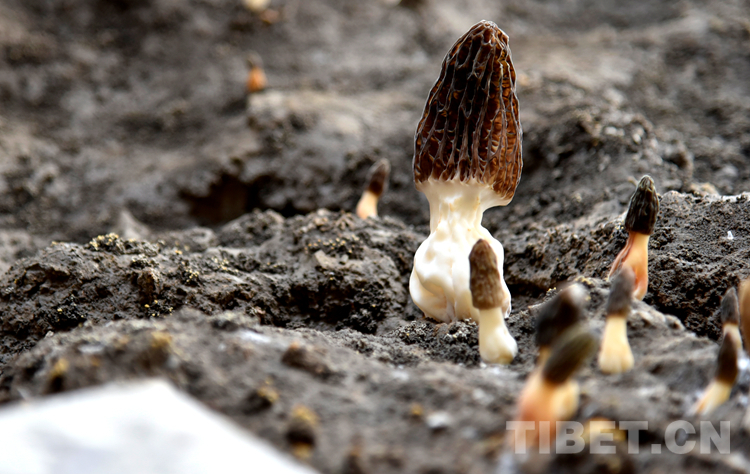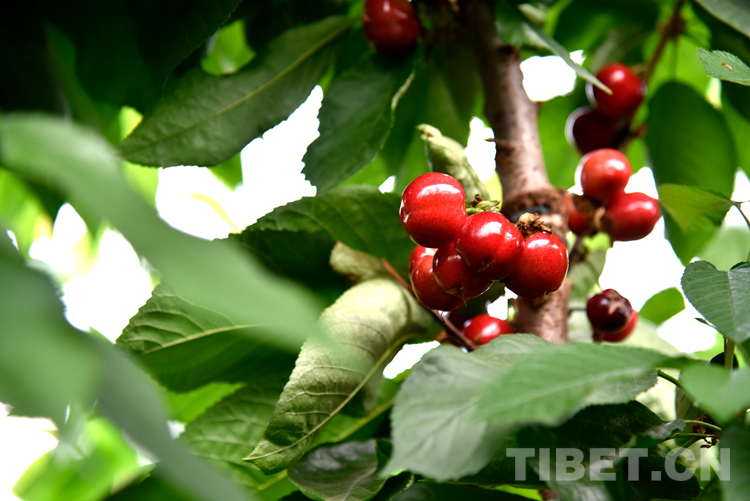Fragrance of melons and fruits in Bainang
"About 20 years ago, we were very envious of the tomatoes and green peppers planted in the greenhouse. We thought that if we planted them by ourselves, we would not be successful." In Penba Dondrup’s memory, planting vegetables was a new and even more difficult thing. Penba Dondrup is the former party secretary of Pengcang Village, Baza Township, Bainang County, Shigatse City, Tibet Autonomous Region.
In 1995, the first batch of aid-Tibet cadres from Shandong province tried to develop the vegetable industry in Bainang. In 1998, the second batch of aid-Tibet cadres from the province introduced greenhouse vegetable cultivation and the trial planting made success. In more than 20 years, batches of aid-Tibet cadres from Shandong province made unremitting efforts to draw a blueprint of planting vegetables on the plateau about 4,000 meters above sea level, enabling farmers and herdsmen to learn planting techniques while enjoy the sweetness of ripe fruits.
Can vegetables be grown on the plateau with an average altitude of more than 4,000 meters? In 1998, the success of 6 greenhouses on the plateau made local people gradually accept this new thing. In 2001, the third batch of aid-Tibet cadres from Jinan City of Shandong province sought funds and built 70 adobe greenhouses in Pengcang Village. Since then, villager Laba Tashi has begun to learn techniques from them. "They taught us very carefully and guided us hand by hand." After two years of learning, the 70 greenhouses in the village were distributed to each household, and Laba Tashi's family also got 3 greenhouses.

"At that time, we planted cucumbers and tomatoes. We kept some for ourselves, and most of them were sold to downtown Shigatse." Laba Tashi recalled that the income of a greenhouse could reach thousands of yuan.
Compared with only making 6 yuan per day when working in the county town, the villagers now gradually began to join in vegetable growing. In 2011, the per capita income of Pengcang Village exceeded 10,000 yuan, becoming the first and only "10,000-yuan village" in Bainang County.

"Last year, my family's income from vegetable growing was about 50,000 yuan. We grow melons in summer and vegetables in winter." Laba Tashi said that in the past, people in the village would carry baskets full of vegetables and wait for the bus to go out to sell vegetables. Now, every household drives their own cars to sell vegetables.
In 2021, the per capita disposable income of Pengcang Village reached 29,200 yuan, of which fruit and vegetable sales account for 52%. The fruit and vegetable industry has become a local characteristic pillar industry.
White morels, like umbrellas, emerge from the ground; red cherries on branches attract tourists to pick and have a taste. In the greenhouses of Pengcang Village and Mount Qomolangma Modern Agricultural Science and Technology Innovation Expo Park, all kinds of fruits and vegetables are growing gratifyingly. Vegetable greenhouses built from scratch, planting scale growing from small to large, planting varieties increased... The once traditional farming areas have bid farewell to the "old three" of radish, cabbage and potatoes, and have become a well-known place full of vegetables and fruits.
In Tibet's first pastoral complex national 4A-level scenic spot - Mount Qomolangma Modern Agricultural Science and Technology Innovation Expo Park, Zongji and her husband Hu Jian are working in the watermelon shed. Zongji has been working here for 5 years, and has learned to master the temperature and humidity in the shed, as well as take care of vegetables and fruits. She told reporters that they had worked in Inner Mongolia far from home before, but they didn't earn much. "I earn 5,000 yuan a month here. It's close to my home, and I can learn techniques." Zongji and Hu Jian plan to study more techniques and return to Gansu to plant fruits and vegetables in greenhouses in the future.

